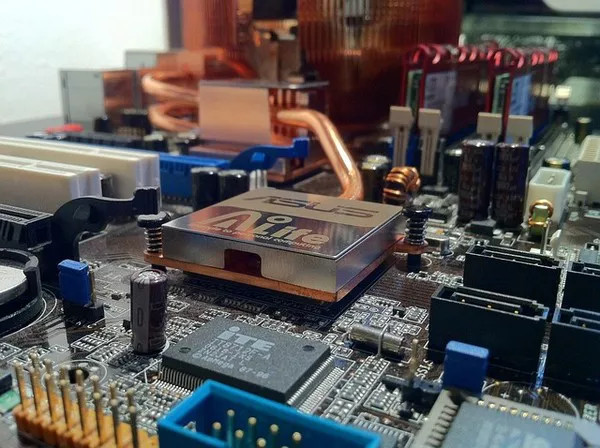The development of electric vertical takeoff and landing (eVTOL) technology is rapidly advancing across the United States. Recent demonstrations highlight the potential of hydrogen fuel cell- and battery-powered aircraft, showcasing innovations from air taxis to military applications. Here are four notable flights that exemplify this progress.
1. The Viceroy: An All-Electric Seaglider
Regent Craft is set to conduct full-scale prototype testing of its all-electric seaglider, the Viceroy, on Rhode Island waterways. Human flight trials are expected to commence later this year, with the first flight scheduled for early 2025.
Designed to accommodate 12 passengers or a 3,500-pound payload, the Viceroy cruises at 180 mph using distributed blown wing propulsion powered by eight electric motors. Its controlled hydrofoil retracts during takeoff and extends upon landing for a smooth approach to the terminal dock.
With current battery technology, the Viceroy offers a range of about 180 miles, but advancements could extend this to 500 miles. Notably, it operates within a wingspan of approximately 30 feet from the water’s surface, enhancing safety and aerodynamics. Additionally, it is 30 decibels quieter than traditional helicopters.
The U.S. Coast Guard has approved a navigational safety risk assessment for the Viceroy, which is also being showcased for military applications in collaboration with the Marine Corps Warfighting Lab. Regent Craft has already secured over 600 orders from airlines and ferry operators, bolstered by investments from industry leaders such as Lockheed Martin and Japan Airlines.
2. Hydrogen Fuel Cell-Powered Uncrewed Aircraft
Boeing subsidiary Aurora Flight Sciences has successfully completed an endurance test of its hydrogen fuel cell-powered small uncrewed aircraft, SKIRON-XLE, at a Virginia airfield. The aircraft, which carried a 54-pound payload for seven hours, returned with two depleted 5-liter hydrogen tanks.
SKIRON-XLE combines eVTOL capabilities with fixed-wing performance, allowing for long-range reconnaissance. Its rotors facilitate vertical takeoff and landing, while the fixed-wing design supports extended travel. The aircraft features a lithium polymer auxiliary battery and can mount payloads in various configurations.
Building on the electric variant SKIRON-X, the hydrogen-powered SKIRON-XLE boasts an eight-mile range and three-hour flight endurance. The recent demonstration involved technology contributions from multiple suppliers, including a fuel cell from U.K.-based Intelligent Energy and an electro-optical/infrared (EO/IR) camera payload from Oregon’s Trillium Engineering.
3. Liquid Hydrogen-Powered Air Taxi
H2FLY, a subsidiary of Joby Aviation, achieved a remarkable milestone with its hydrogen-electric VTOL aircraft, completing a 523-mile emissions-free flight in California. The aircraft released only water vapor as a byproduct, landing with 10% of its liquid hydrogen fuel load still intact.
Powered by a hydrogen fuel cell that operates six electric motors, the aircraft received most of its energy from liquid hydrogen. A battery-electric version had previously completed over 25,000 miles of testing, forming the basis for this hydrogen-converted variant. The system uses a vacuum-jacketed tank to store up to 88 pounds of liquid hydrogen at approximately -252°C, providing significant energy density advantages over conventional fuels.
This demonstration followed a successful piloted flight of the liquid hydrogen system last year, affirming the aircraft’s mid to long-range flying capabilities.
4. Hybrid-Electric Short TOL Demonstration
Virginia-based Electra Aero showcased its hybrid-electric EL-2 Goldfinch at NASA’s Langley Research Center, marking the facility’s first piloted electric flight. This aircraft is designed for short takeoff and landing (STOL) operations and successfully flew 120 miles from Electra’s Northern Virginia site to Hampton.
The flight demonstrated the distributed electric propulsion system’s blown lift capability, achieving takeoff within just 150 feet at a slow speed of 35 mph. The hybrid-electric system combines a turbogenerator for cruising with battery packs connected to electric motors for takeoff and landing.
Electra Aero aims to facilitate 35-minute flights between Northern Virginia and Hampton Roads, a trip that typically takes 2.5 hours by car. The aircraft has the potential to replace short- to medium-distance drives, carrying up to nine passengers or 2,500 pounds of cargo.
Conclusion
These recent demonstrations underline the rapid advancements in electric and hydrogen-powered aviation, signaling a promising future for sustainable air travel. As technologies evolve, electric and hydrogen aircraft could redefine transportation, making it more efficient and environmentally friendly.
You Might Be Interested In

